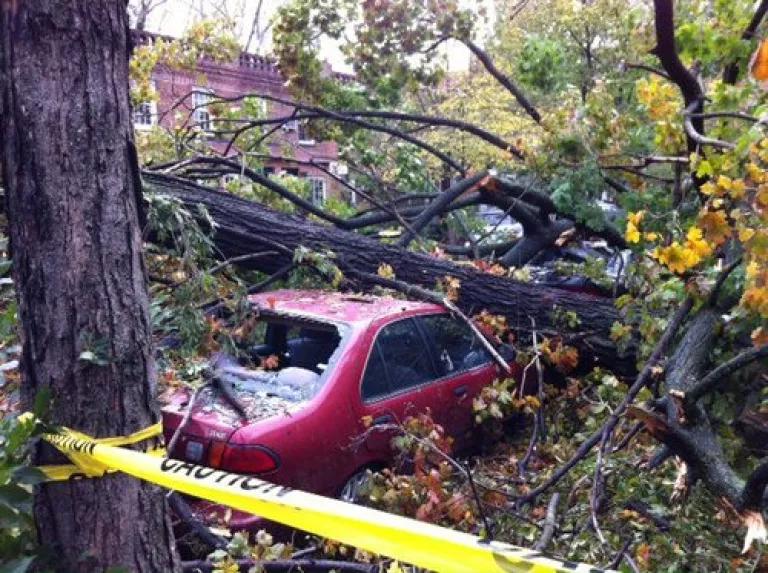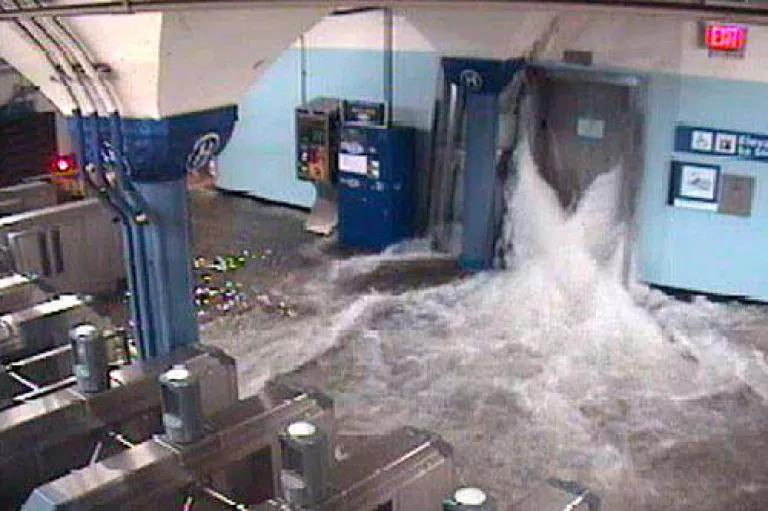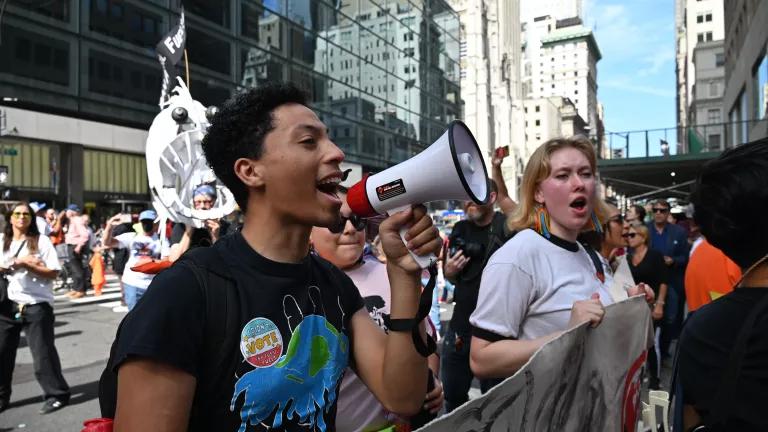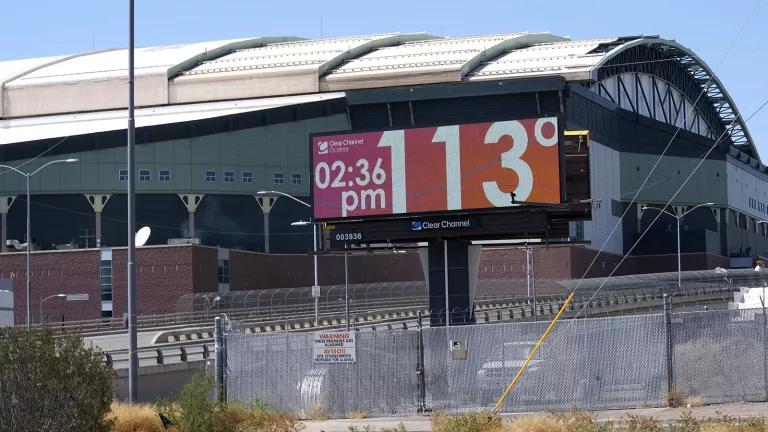
Queens, New York.
Millions of Americans woke up Tuesday morning to a changed world. Hurricane Sandy had flooded our streets, ripped down our power lines, and tossed trees into ours homes. Cars, boats, and debris carried by surging waters lay scattered along the roads. Towns and cities had been pummeled, and the storm wasn’t even finished yet. New Jersey was still getting gusts of up to 40 miles per hour and West Virginia was receiving up to 2 feet of snow. Eight million people didn’t have power and probably wouldn’t for days.
It will take months to assess the scope of Sandy’s destruction. But already we know this: the storm didn’t just break records. It upturned lives. Homes, businesses, medical needs, travel plans, nest eggs and more were threatened by the storm. More than 55 people died.
These are the true costs of extreme weather. Now that climate change is increasing the power and frequency of storms like Sandy, more people will be paying the price.
Some leaders ignore climate change, some belittle it, and others counsel patience. Yet people living in the path of Hurricane Sandy understand that America can’t wait any longer to protect our communities from more extreme weather events.
My own communities are among the hardest hit. I grew up in New Jersey and I live in New York, and I never saw anything like Sandy before. Battery Park, Red Hook, and other neighborhoods were inundated by a 13-foot storm surge. A New York Fire Department company had to evacuate their headquarters via boat. People had to be rescued from their attics when flood waters submerged their Staten Island homes. Atlantic City’s iconic boardwalk was torn to shreds. Empty train cars washed up on the New Jersey Turnpike and had to be lifted off with a crane. New Jersey Governor Christie ordered urban search and rescue missions to try to save people who had not fled in advance of the storm.
“Urban search and rescue” was not a term I heard growing up here, but we have entered a new era. Climate change has begun to make its presence known. It is heating up our oceans and pumping hurricanes and other storms with extra energy, more moisture, and stronger winds. It is swelling our seas, so that storm surges are higher and cause more flooding. From Norfolk, Virginia to Boston, sea levels are rising four times as fast as the global average. Hurricane Sandy cut right along those swollen seas.

Hoboken PATH Station.
Port Authority of New York and New Jersey
Climate change has become pervasive. “The answer to the oft-asked question of whether an event is caused by climate change is that it is the wrong question,” writes Kevin E. Trenberth of the National Center for Atmospheric Research. “All weather events are affected by climate change because the environment in which they occur is warmer and moister than it used to be.”
I know New York and New Jersey are resilient places. I have seen them recover from terrorist attacks and economic downturns, and I am confident communities up and down the East Coast will recover from Hurricane Sandy.
But when will we stop asking them to rebuild in the wake of disasters? When will we start confronting the challenge of climate change before more people are endangered? When will we begin arming our towns and cities with the tools they need to respond to extreme weather?
The longer we wait to have an open national conversation about climate change, the more communities will be in harm’s way. We live in the richest country in the 21st century. Surely we can have a civil conversation about how to prepare and deal with climate change. We can discuss the science, we can debate the politics, we can dispute the policy measures. But we cannot wait any longer.
We must honor the people who suffered through Hurricane Sandy—and the Midwestern drought and the Western wildfires and the numerous other extreme weather events of 2012—and we must confront climate change.



